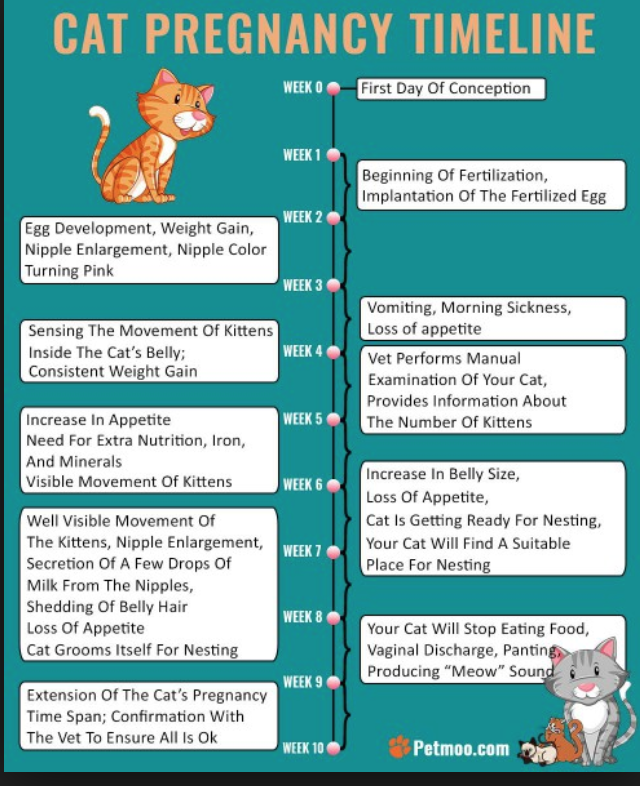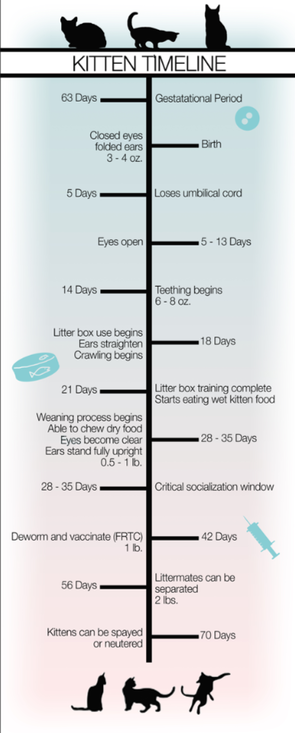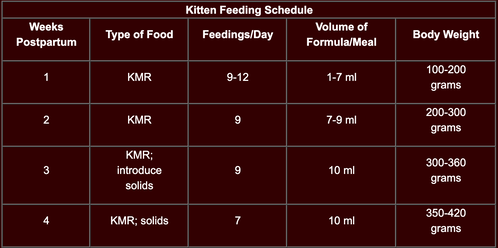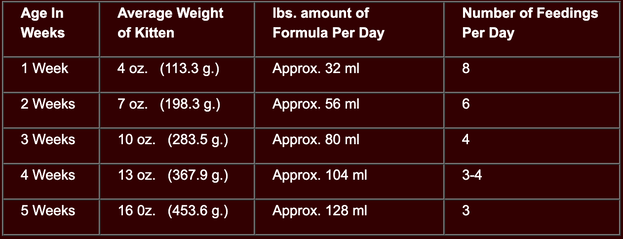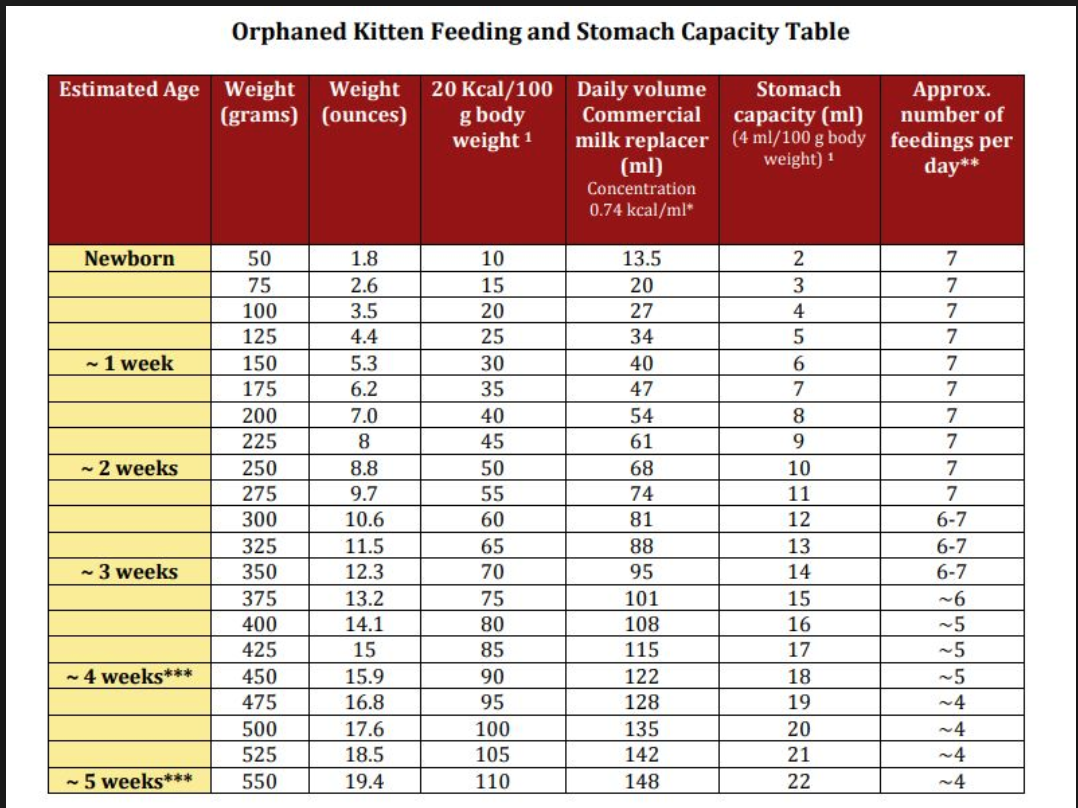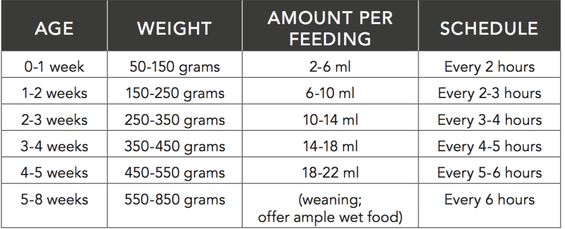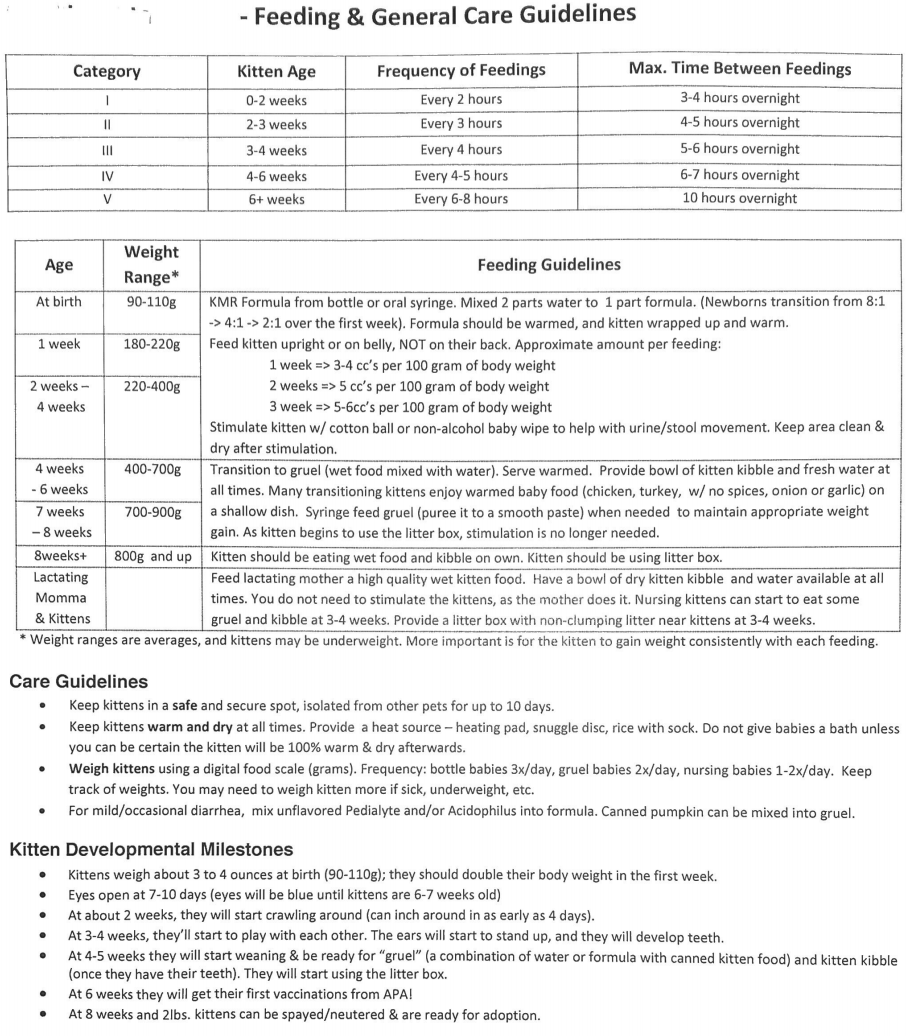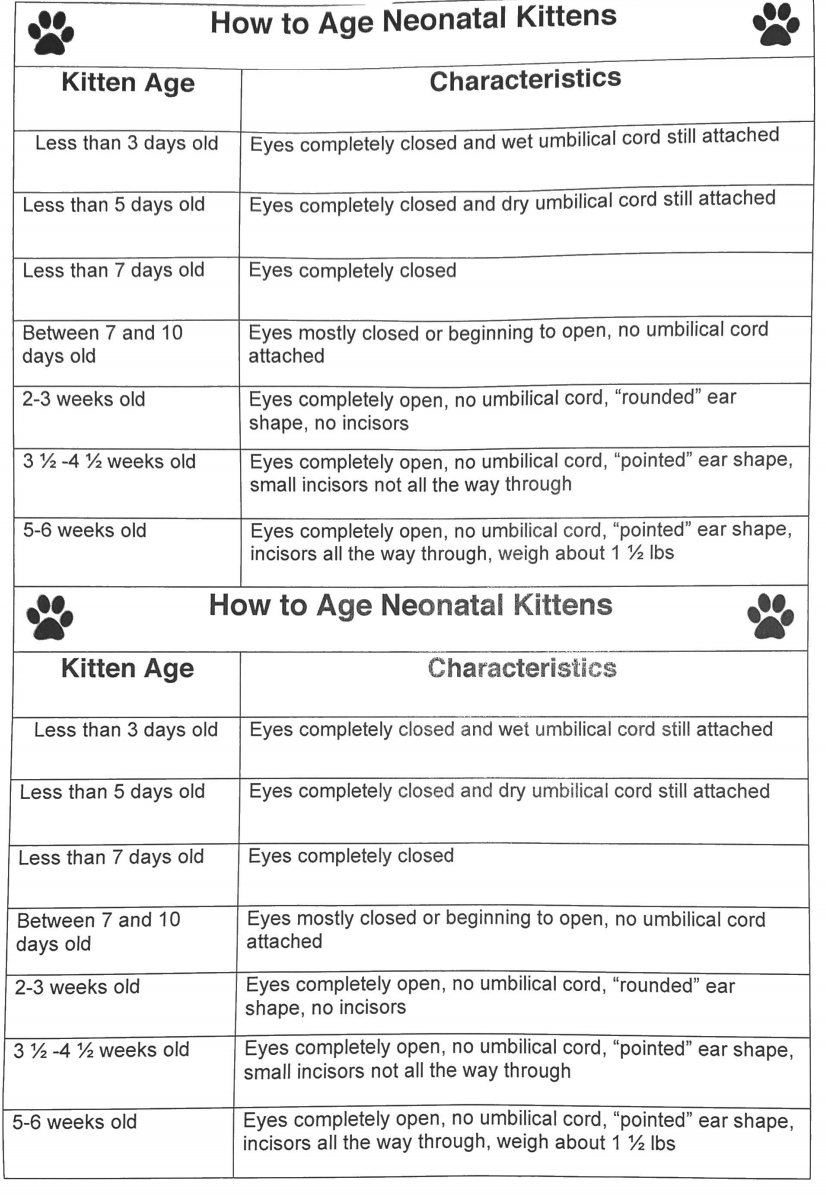Taken from sources around the Web
5-point Checklist for Owners Expecting Kittens
Here is a great link to an article on When to wait and when to worry at Kitten Birth.
Taking care of your cat during her pregnancy is an exciting time. Make sure you’re fully prepared for the new arrivals with my checklist of essentials:
1. Feed your mother-to-be kitten food
As soon as you find out your cat is pregnant, start feeding her a good quality kitten food and continue until the kittens are weaned. This will give her the increased energy and nutrients she needs for the growth of the kittens, and to produce her milk. Royal Canin is a trusted brands for all life stages.
It’s also a good idea to have the food available at all times, as your cat will probably want to eat small, frequent meals.
2. Set up a kittening area
Approximately 2 weeks before your cat is due to give birth, you should prepare a kittening area – cats are notorious for choosing to nest in the most inconvenient of areas if there is no suitable box available! Most cats will prefer a covered box and you must make sure it has no rough edges. It should have an easy to clean flooring and a small ledge at the doorway so that the kittens cannot fall out. Popular choices include:
Place the kittening box in a dark, quiet area away from any drafts or frequent foot traffic. Your cat will want to feel private, comfortable and safe. Once you’ve found the perfect location, place her litter box, food and water nearby, and let your cat sleep in the box so that she becomes familiar with it. Of course, when the moment comes, your cat may choose a different spot to have her kittens –- if so, it’s best to leave her be.
3. Choose the right bedding
Line your kittening box with paper or puppy training pads. Newspaper is a good choice as it is clean, disposable and absorbent, and your cat can tear it up when she is building her nest. You could also use soft, washable bedding such as blankets or towels. Change and/or wash the bedding each day.
4. Organize some emergency equipment
Before the delivery, you should gather together an emergency box, containing:
Before your cat is due to give birth, visit your vet so you know what to expect and can ask any questions you may have. Make sure the number for your local vet or emergency provider is on hand in your home in case you need it during the birth.
You will need to call your vet if your cat strains unproductively for an hour or more during the birth; if she doesn’t appear to be taking care of the kittens, or if you have any other concerns. If your cat’s pregnancy wasn’t planned, please discuss with your vet when you can have her spayed.
5. Prepare milk replacer and kitten food
If a kitten is unable to nurse, or if your mother cat has mastitis, you’ll need to feed it via syringe with supplemental milk formula with colostrum. Some products to consider include:
Here is a great link to an article on When to wait and when to worry at Kitten Birth.
Taking care of your cat during her pregnancy is an exciting time. Make sure you’re fully prepared for the new arrivals with my checklist of essentials:
1. Feed your mother-to-be kitten food
As soon as you find out your cat is pregnant, start feeding her a good quality kitten food and continue until the kittens are weaned. This will give her the increased energy and nutrients she needs for the growth of the kittens, and to produce her milk. Royal Canin is a trusted brands for all life stages.
It’s also a good idea to have the food available at all times, as your cat will probably want to eat small, frequent meals.
2. Set up a kittening area
Approximately 2 weeks before your cat is due to give birth, you should prepare a kittening area – cats are notorious for choosing to nest in the most inconvenient of areas if there is no suitable box available! Most cats will prefer a covered box and you must make sure it has no rough edges. It should have an easy to clean flooring and a small ledge at the doorway so that the kittens cannot fall out. Popular choices include:
- Front opening pet travel carrier (with the door removed)
- A cardboard box (always popular with felines!)
- Laundry basket
- A new litter box, Kitten Size
Place the kittening box in a dark, quiet area away from any drafts or frequent foot traffic. Your cat will want to feel private, comfortable and safe. Once you’ve found the perfect location, place her litter box, food and water nearby, and let your cat sleep in the box so that she becomes familiar with it. Of course, when the moment comes, your cat may choose a different spot to have her kittens –- if so, it’s best to leave her be.
3. Choose the right bedding
Line your kittening box with paper or puppy training pads. Newspaper is a good choice as it is clean, disposable and absorbent, and your cat can tear it up when she is building her nest. You could also use soft, washable bedding such as blankets or towels. Change and/or wash the bedding each day.
4. Organize some emergency equipment
Before the delivery, you should gather together an emergency box, containing:
- Dental floss to tie the cord in case the mother doesn’t do it herself
- Clean scissors to cut the cord
- Iodine or chlorhexidine tincture to apply to the kittens’ navels to stop infection
Before your cat is due to give birth, visit your vet so you know what to expect and can ask any questions you may have. Make sure the number for your local vet or emergency provider is on hand in your home in case you need it during the birth.
You will need to call your vet if your cat strains unproductively for an hour or more during the birth; if she doesn’t appear to be taking care of the kittens, or if you have any other concerns. If your cat’s pregnancy wasn’t planned, please discuss with your vet when you can have her spayed.
5. Prepare milk replacer and kitten food
If a kitten is unable to nurse, or if your mother cat has mastitis, you’ll need to feed it via syringe with supplemental milk formula with colostrum. Some products to consider include:
- Kitten Milk Replacers
How to bottle feed a Kitten
Supplementing Newborn Kittens:
Please note that we are NOT Veterinarians...
This information was collected from around the web and placed here for reference only...
If you have a baby kitten in distress consult your veterinarian as soon as possible.
KMR Liquid Milk Replacer is recommended as a food source for orphaned or rejected kittens or those nursing, but needing supplemental feeding. The Replacer is also recommended for growing kittens or adult cats that are stressed and require a source of highly digestible nutrient.
Supplementing newborn kittens with goat milk is a good choice and similar to cat's milk. Goat milk is usually available at grocery stores and in addition to that, you can try adding goat milk and KMR together and save on expenses. Do not feed kittens cow's milk since they are lactose intolerant. Goat's milk is a good option for easy digestion of small kittens.
Most infections with Giardia are asymptomatic. In the rare cases in which disease occurs, younger animals are usually affected, and the usual sign is diarrhea. The diarrhea may be acute, intermittent, or chronic. Usually, the infected animals will not lose their appetite, but they may lose weight. The feces are often abnormal, being pale, having a bad odor, and appearing greasy. In the intestine, Giardia prevents proper absorption of nutrient, damages the delicate intestinal lining, and interferes with digestion.
If you need a quick formula, and don't have KMR on hand (or another kitten supplement): *
EMERGENCY KITTEN MILK REPLACER
(The following is to be used only in emergency situations where a commercial kitten formula is not available. They are NOT meant or formulated to be used long term) This product is available at local pet stores:
HOMEMADE RECIPE FOR KITTEN FORMULA
3 oz condensed milk (Carnation Evaporated Milk)
3 oz distilled water
4 oz plain yogurt (not low fat)
3 large or 4 small egg yolks - no whites
Do not feed raw egg whites, as a biotin deficiency may occur due to an enzyme in the white part of the egg. The enzyme is destroyed with cooking. Honey may contain bacteria, which may be fatal to the kittens.
** *REFRIGERATE any unused formula and make fresh formula if all is not used within 48 hours.
Hand Raising Newborn Kittens For the first 10 days, weigh the kittens daily at the same time to monitor their weight gain. Then 3-4 times a week for another 10 days. The common first sign of illness is lack of weight gain or weight loss. Each kitten should gain 50-100 grams per week. By 14 days of age, the birth weights should be doubled. In general, if the kittens are not gaining weight, they need more food. If the kittens develop diarrhea, they may be overfed. Please keep your kitten warm before you start feeding.
Please note that we are NOT Veterinarians...
This information was collected from around the web and placed here for reference only...
If you have a baby kitten in distress consult your veterinarian as soon as possible.
KMR Liquid Milk Replacer is recommended as a food source for orphaned or rejected kittens or those nursing, but needing supplemental feeding. The Replacer is also recommended for growing kittens or adult cats that are stressed and require a source of highly digestible nutrient.
Supplementing newborn kittens with goat milk is a good choice and similar to cat's milk. Goat milk is usually available at grocery stores and in addition to that, you can try adding goat milk and KMR together and save on expenses. Do not feed kittens cow's milk since they are lactose intolerant. Goat's milk is a good option for easy digestion of small kittens.
Most infections with Giardia are asymptomatic. In the rare cases in which disease occurs, younger animals are usually affected, and the usual sign is diarrhea. The diarrhea may be acute, intermittent, or chronic. Usually, the infected animals will not lose their appetite, but they may lose weight. The feces are often abnormal, being pale, having a bad odor, and appearing greasy. In the intestine, Giardia prevents proper absorption of nutrient, damages the delicate intestinal lining, and interferes with digestion.
If you need a quick formula, and don't have KMR on hand (or another kitten supplement): *
EMERGENCY KITTEN MILK REPLACER
(The following is to be used only in emergency situations where a commercial kitten formula is not available. They are NOT meant or formulated to be used long term) This product is available at local pet stores:
HOMEMADE RECIPE FOR KITTEN FORMULA
3 oz condensed milk (Carnation Evaporated Milk)
3 oz distilled water
4 oz plain yogurt (not low fat)
3 large or 4 small egg yolks - no whites
Do not feed raw egg whites, as a biotin deficiency may occur due to an enzyme in the white part of the egg. The enzyme is destroyed with cooking. Honey may contain bacteria, which may be fatal to the kittens.
** *REFRIGERATE any unused formula and make fresh formula if all is not used within 48 hours.
Hand Raising Newborn Kittens For the first 10 days, weigh the kittens daily at the same time to monitor their weight gain. Then 3-4 times a week for another 10 days. The common first sign of illness is lack of weight gain or weight loss. Each kitten should gain 50-100 grams per week. By 14 days of age, the birth weights should be doubled. In general, if the kittens are not gaining weight, they need more food. If the kittens develop diarrhea, they may be overfed. Please keep your kitten warm before you start feeding.
FEEDING:
Warm formula but make sure it’s not too hot ! Use a plastic feeding tube – a 3 cc size is best but you can use a 1 cc size and you can obtain a tube from a vet or pharmacy. Kittens need to be fed every 2 – 3 hours until they are 4 weeks old. At 4 weeks old, you can introduce some canned cat food mixed with the baby kitten formula but supplement with the feeding tube until all kittens are fully able to eat enough on their own. They should be weighed on a kitchen scale each day and their weight recorded in order to make sure they are gaining.
For example, a 2 day old kitten requires 24mL of formula divided into 8 feedings, equaling 3mL per feeding (24 / 8 = 3) . In general, the kitten will need about 8mL per ounce of body weight per day.
After every feeding, keep a record of how much the kitten has taken. This will help work out whether he’s getting enough throughout the day. Also, keep track of his development by weighing him at the same time every day using a small kitchen scale (or something similar to record small increments). Keeping track of his weight will help you identify any weight loss or potential problems quickly. Also, your doctor will be glad you kept these records in case any problems arise down the line.
Warm formula but make sure it’s not too hot ! Use a plastic feeding tube – a 3 cc size is best but you can use a 1 cc size and you can obtain a tube from a vet or pharmacy. Kittens need to be fed every 2 – 3 hours until they are 4 weeks old. At 4 weeks old, you can introduce some canned cat food mixed with the baby kitten formula but supplement with the feeding tube until all kittens are fully able to eat enough on their own. They should be weighed on a kitchen scale each day and their weight recorded in order to make sure they are gaining.
For example, a 2 day old kitten requires 24mL of formula divided into 8 feedings, equaling 3mL per feeding (24 / 8 = 3) . In general, the kitten will need about 8mL per ounce of body weight per day.
After every feeding, keep a record of how much the kitten has taken. This will help work out whether he’s getting enough throughout the day. Also, keep track of his development by weighing him at the same time every day using a small kitchen scale (or something similar to record small increments). Keeping track of his weight will help you identify any weight loss or potential problems quickly. Also, your doctor will be glad you kept these records in case any problems arise down the line.
*** All these weights are approximate. Your kitten may be slightly over or under weight and still be perfectly healthy. If you have any concerns, or if the kitten just doesn’t seem “right”, consult your doctor.
http://www.thecatpracticepc.com/guides/orphans.pd
A newborn kitten is entirely dependent on its mother. The queen provides three vital requirements:
1. Warmth;
2. Food;
3. Stimulation of the bowel and bladder, and general hygiene.
The kitten's natural mother takes care of both ends of her baby. By licking the kitten's abdomen, she stimulates the bowels and bladder and tidies up the resulting mess. A surrogate cat mom should gently rub the kitten's abdomen and bottom with a cotton ball or pad or tissues moistened with warm water. This stimulates the discharge of waste and keeps babies clean. Be careful to rub only enough to get them to expel waste materials. Keep the area clean and watch for chafing which might indicate that you are rubbing too hard or not cleaning well enough.
When you feed and clean the kittens, wash their fur all over with a barely damp towelette using short stokes as the mother would use. This cleans their fur, teaches them to clean their fur, and gives them a feeling of attention and well-being.
Weighing Kittens
Monitoring weight is an absolutely essential part of orphan kitten care. Knowing the kitten's weight will help you determine their progress and wellbeing, will help with dosing medication and food, and will alert you when the kitten is unwell. Weighing kittens is not optional--you must make it part of your kitten care routine.
Weigh kittens at least once per day and write down the weight. A healthy kitten should gain a minimum of 10 grams per day. If the kitten is not gaining weight, or is losing weight, this is a sign of illness and should be addressed immediately.
Use a small digital scale to weigh your kittens such as a digital kitchen scale. Placing the kitten in a bowl on the scale will help keep the kitten stable--just be sure to tare the scale first so that only the kitten's weight is being recorded. Watch the video below to see how to easily weigh a kitten:
Check out the Weight and Feeding Chart to determine the average healthy weight for each week of kitten development, and note that this is only a guideline--not a rule book. Every kitten's weight will vary, but what is most important is that the kitten is making progress. If the kitten is underweight or losing weight, bring her to a vet immediately to ensure that she is treated and supportive care is put into place.
Monitoring weight is an absolutely essential part of orphan kitten care. Knowing the kitten's weight will help you determine their progress and wellbeing, will help with dosing medication and food, and will alert you when the kitten is unwell. Weighing kittens is not optional--you must make it part of your kitten care routine.
Weigh kittens at least once per day and write down the weight. A healthy kitten should gain a minimum of 10 grams per day. If the kitten is not gaining weight, or is losing weight, this is a sign of illness and should be addressed immediately.
Use a small digital scale to weigh your kittens such as a digital kitchen scale. Placing the kitten in a bowl on the scale will help keep the kitten stable--just be sure to tare the scale first so that only the kitten's weight is being recorded. Watch the video below to see how to easily weigh a kitten:
Check out the Weight and Feeding Chart to determine the average healthy weight for each week of kitten development, and note that this is only a guideline--not a rule book. Every kitten's weight will vary, but what is most important is that the kitten is making progress. If the kitten is underweight or losing weight, bring her to a vet immediately to ensure that she is treated and supportive care is put into place.
Fading Kitten Protocol
Kitten Feeding and General Care Gidelines
How to Age Neonatal Kittens

